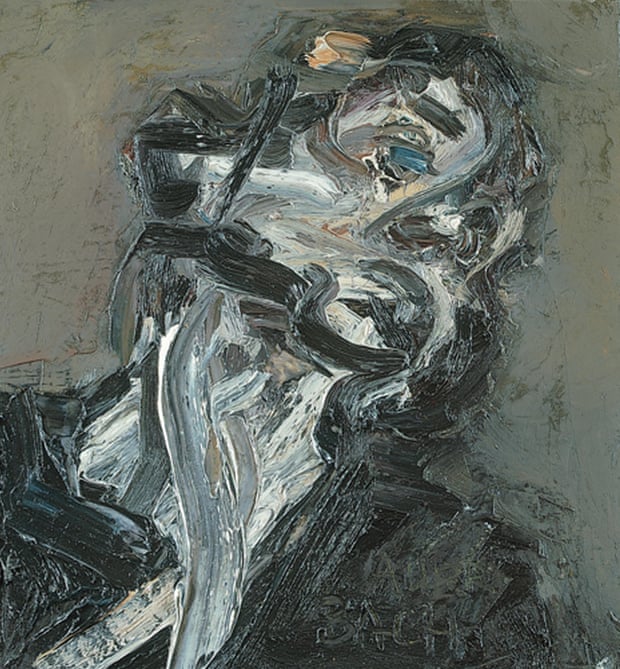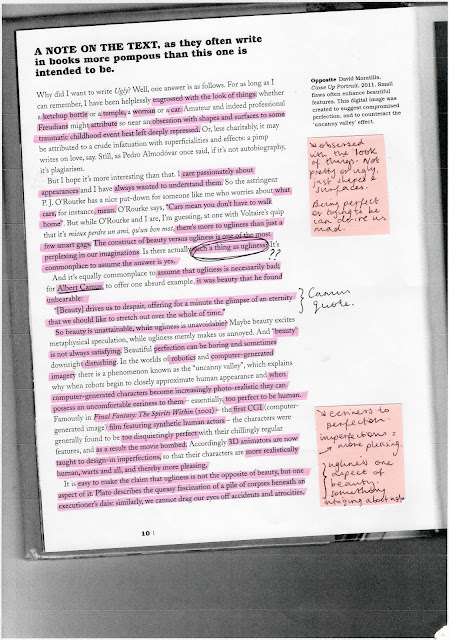Blog Archive
-
▼
2016
(11)
-
▼
January
(11)
- Essay draft 2
- Beauty in Art History
- Essay Tutorial with Judith
- UGLY: The Aesthetics of Everything
- Image workshop artists: Ivan Davenport and Gary Hume
- Frank Auerbach
- Image Workshop - Artists - Marlene Dumas
- Image Workshop Artists - Tuymans and Sansal
- Image Workshop Artists - Gerhard Richter
- The Portrait Now
- Nigel Tomm
-
▼
January
(11)
Monday, 25 January 2016
Thursday, 21 January 2016
Beauty in Art History
Hieronymus Bosch and Pieter Bruegel
Netherlandish Renaissance painter, Pieter Bruegel, specialised in landscapes or scenes with peasants, however also painted religious works. The use of peasants as the main focus in paintings during Breugel's time was very rare.
Bosch, another Dutch painter, often using religious subjects and landscapes in his highly detailed work.
Netherlandish Renaissance painter, Pieter Bruegel, specialised in landscapes or scenes with peasants, however also painted religious works. The use of peasants as the main focus in paintings during Breugel's time was very rare.
| Peasant work |
| Breugel's Seven Deadly Sins |
Bosch, another Dutch painter, often using religious subjects and landscapes in his highly detailed work.
| Crucifixion |
 |
| Creatures |
 |
| Seven Deadly Sins |
Tuesday, 19 January 2016
Essay Tutorial with Judith
Need a focus for a title. My work at the moment is focused around aesthetics. I use movement in my work and leave evident brush strokes. I am interested in beauty, and in my work where the subject may not be necessarily beautiful (however sometimes it might be), the way in which I paint, and my use of colour palette, finds a way to make the image beautiful. Finding beauty in the process of painting. The beauty is brought out.
Something I can consider: is the purpose of art to make things beautiful?
Does the essay have to be sort of a two sided argument? For and against?
No, but a good way to layout. Must consider different view points. "I think this piece of work is beautiful because... however this person would not agree as they think beauty is...." etc. Locate different definitions of beauty.
"This work doesn't conform with this definition of beauty, however other definitions would call it beautiful."
For my introduction Judith has suggested I could look at beauty in general. Associations with beauty.
20th century has strong links with beauty. Look at the rejection of beauty in art.
Art history: People have talked a lot about beauty in the 20th century and think it started in the early 1900's however, when you look back to artists such as Hieronymus Bosch working in the 1400's his work is not beautiful at all. Quite the opposite. Breugel similarly. Not beautiful paintings however very highly regarded. Contradicts view of art having to be and always being beautiful, when you see work but such well renowned artists.
Subject may not be beautiful, however what he has done with the medium and subject matter is beautiful. Very realistic. Also unusually intriguing.
Anti-art did not just start in 20th Century. Actually taps into earlier traditions.
In my work what is going on between me and the subject? Am I trained to find the beautiful.
Is beauty about the image? or the application of the paint?
Find a question that suits my own practice.
Something about the role of art in recognising/and or making something beautiful. And what is the process of this.
Judith recommended On Ugliness by Umberto Eco, however this is not available at the school library. I am looking at ordering it, however with only 2 and a half weeks until submission I am not sure whether it will come to much use. It may be something I consider for next unit.
Tuesday, 12 January 2016
UGLY: The Aesthetics of Everything
This text looks at aesthetics through the term 'Ugly'. Is there such a thing as ugliness? Just because something is not deemed as 'beautiful' does not mean we don't want to look at it. Does not mean we aren't intrigued by it. Absorbed and consumed by it.
When we consider perfection, we think of beautiful models and we dream of being them. Everyone tries to be perfect, it can consume us and drive us mad. However, is perfection boring? Nothing interesting about the same regurgitated models with symmetrical faces and perfectly done hair. There is something interesting about being different, not quite perfect. In the first CGI film 'Final Fantasy', they created CGI human actors, which were seen as too perfect. Imperfections to normal people are more appealing. Make us feel better about our own insecurities. Ugliness is an aspect of beauty, not the opposite.
| Final Fantasy: The Spirits Within |
Idea of grotesques, freaks, devils not the same as ugliness? Lots of people would say freaks and devils are ugly, however I would say they are intriguing. Different. Maybe they are 'ugly' but the actual description of ugliness does not mean the same to others as it does to me. I see ugliness as interesting and I often find my self drawn to things that I don't understand and are not necessarily nice to look at.
Can there really be a link between aesthetics and science? Science relies on evidence and results, whereas beauty is a matter of opinion. Or is it?
Friday, 8 January 2016
Image workshop artists: Ivan Davenport and Gary Hume
Ivan Davenport
Abstract - colours. Eyes follow down the piece and are focused on the puddle at the end. Hints to some ideas of movement.
Gary Hume:
These are some artists that use traditional paint to make work. Often gloss or enamel.
Frank Auerbach
Frank Auerbach was suggested to me by my Tutor as my work is beginning to explore the idea of movement. I am interested in the meaning of what you do with the paint, looking into ideas regarding the actual 'body' of paint.
Is there a relationship between the human body and the body of paint?
 |
| E. O. W. on her Blue Eiderdown II, 1965 |
 |
| Frank Auerbach. Head of E.O.W. IV, 1961 |
 |
| Head of JYM ll, 1984-85 |
Is there a relationship between the human body and the body of paint?
Image Workshop - Artists - Marlene Dumas
Subscribe to:
Comments (Atom)

































